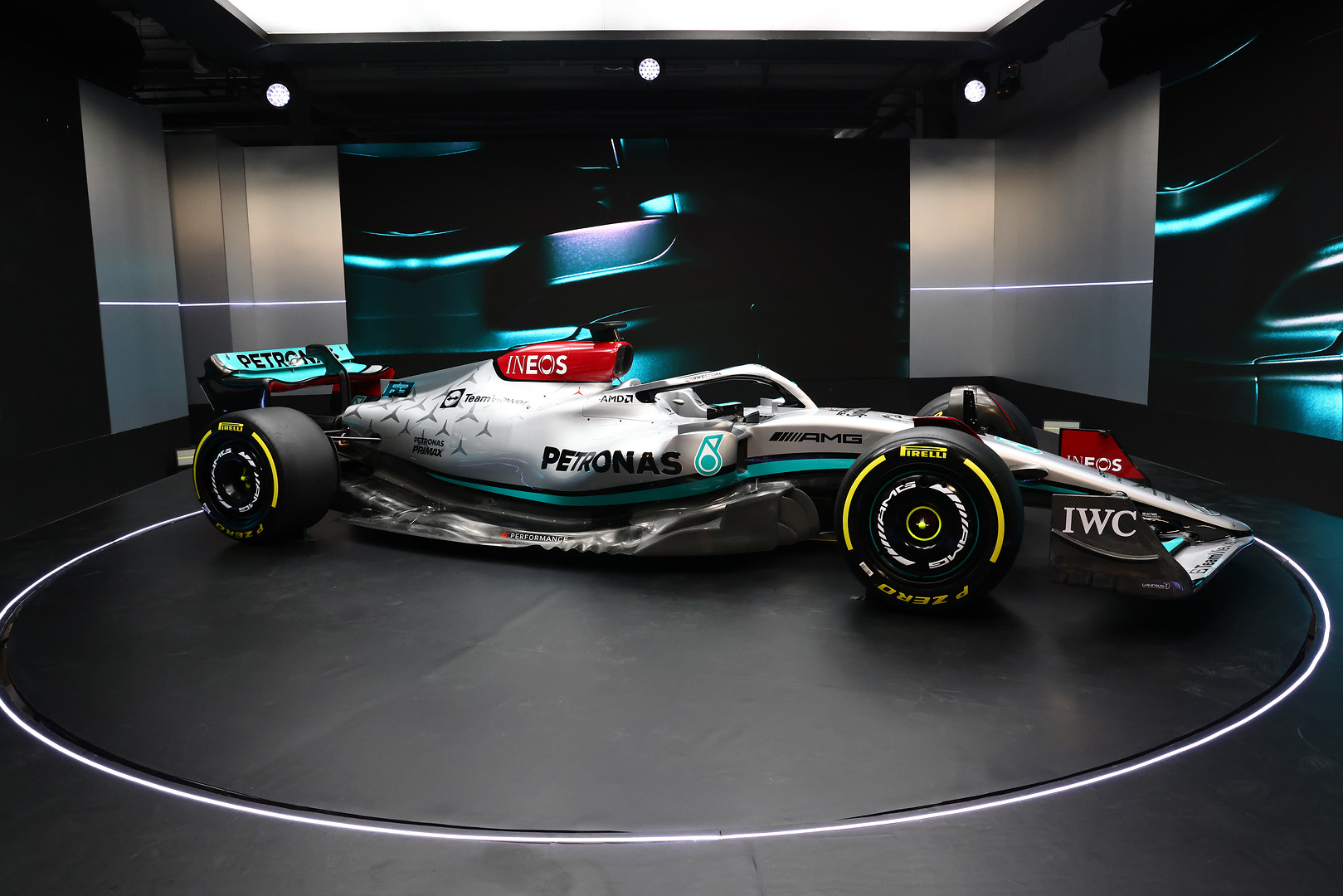Mercedes conducted a “complete internal repackaging” to get the aerodynamic shapes it wanted for its 2022 Formula 1 car, according to its technology director Mike Elliott.
The W13 revealed on Friday morning continues the trend of tightly packaging areas of the car including the sidepods and engine cover.
Elliott said achieving progress in this area was “not just a case of a shrink-wrapping exercise” but the work of “a huge amount of redesign and simulation”.
“We have talked a lot about the aerodynamic changes, because these are most visible, and these regulations aim to improve overtaking,” Elliott added.
“In fact, most of the car has had to change, which has been a huge challenge for the whole team. Getting to the desired aero shapes has meant a complete internal repackaging, right down to the electrical layout and where we fit things like the ECU.
“The suspension has been redesigned to account for the loss of hydraulics and remote springs, now banned in the new regulations.
“Hopefully, you will also see that we have taken another step with how tightly packaged the sidepods and engine cover are.”
F1’s 2022 aerodynamic rules overhaul is the biggest in a generation and has influenced the way in which Mercedes and its rivals can place certain parts.

Elliott said the steering wheel had been carried over but that the parts were otherwise “all new, and that’s primarily a consequence of these new aerodynamic rules”.
“The way the aerodynamic surfaces are defined in the regulations is also completely different: this year you are given a CAD surface and a tolerance to it,” he said.
“That means the designers must think differently and the process of making sure the geometry is legal is much harder.
“In the past we had lots of little details on the car that added up to quite a big chunk of aerodynamic performance, but now, the component detail isn’t anywhere near as complex.
“So, the gains you are making are in fundamental shape changes and bigger components than before.”
Renders that were released on Friday morning had visible differences to the car shown during Mercedes’ launch, which has been confirmed as the version of the car that will be tested.
But Elliott said the car will still undergo a large amount of evolution during testing and that means Mercedes cannot be certain of how it compares to its rivals until the opening round of the season in Bahrain next month.
“It is always a special moment when you see the car run for the first time,” said Elliott.
“It sounds like a cliche, but people have sweated blood and tears in Brackley and Brixworth, through the year but particularly over the build period and winter, to deliver the car and be able to run it. Now we enter the learning phase.
“Because the cars will evolve so much over the test, we won’t know where we are until we get to the first race, but we’ve got that mixture of trepidation, excitement of developing the car and seeing what we have created, and pride about what we have achieved together.”




